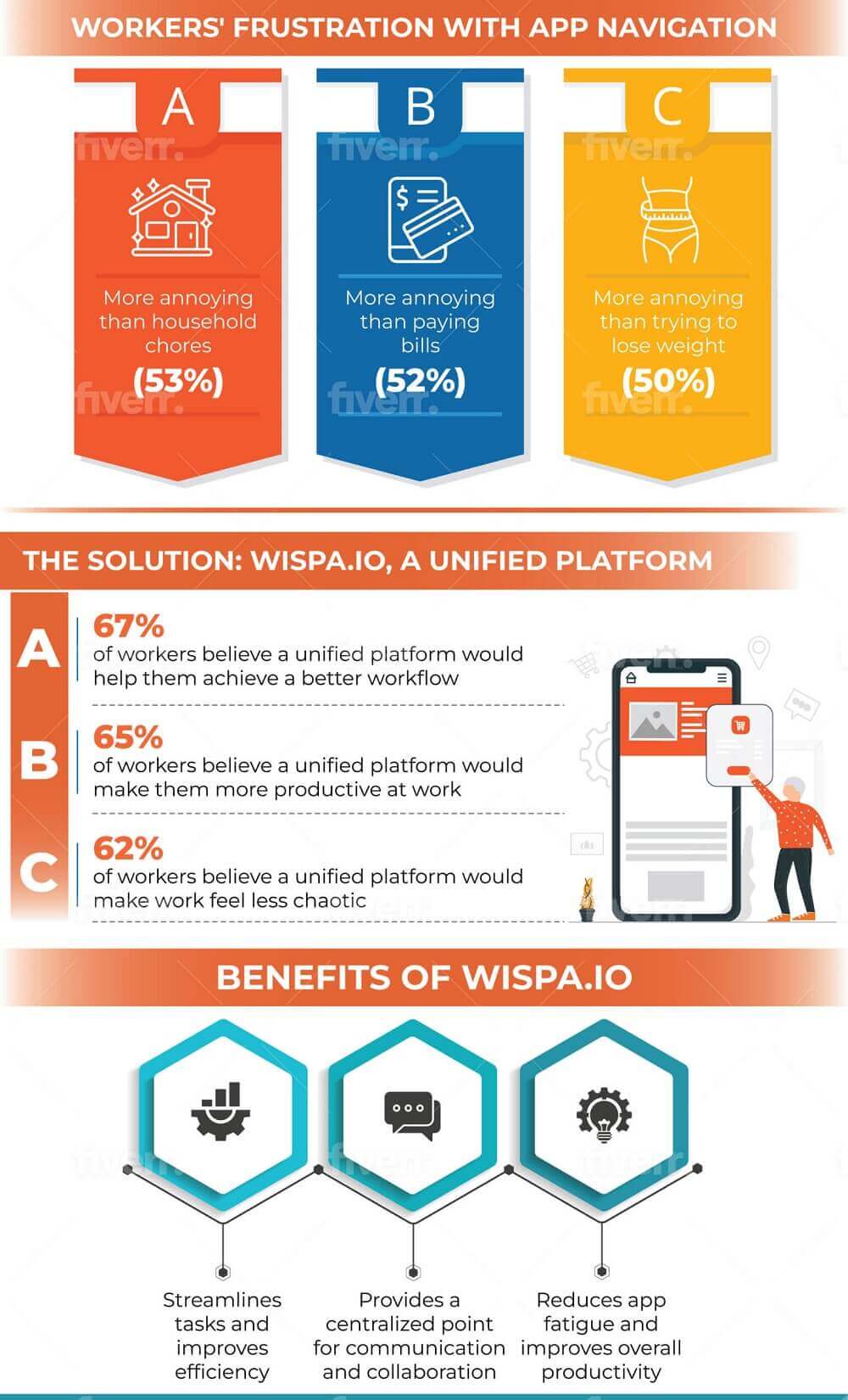Welcome to the world of business transformation led by Wispa – a pioneer in holistic management solutions. In the modern era, where integration is crucial, Wispa stands at the top, offering holistic solutions that redefine how businesses operate.
Through cutting-edge technology and strategic skills, Wispa’s approach surpasses traditional problem-solving, empowering enterprises to thrive in today’s promising market landscape.
Please stay with me as we explore how Wispa’s integrated approach is a guiding force for businesses aiming for solutions and sustainable success.
Understanding Wispa’s Holistic Approach
Holistic management in business is a comprehensive approach that considers and integrates all aspects of an organization’s operations.
It’s a methodology that acknowledges the interconnectedness of various elements within a business and aims to manage them harmoniously. This approach typically involves:
- Integration Across Departments
- Long-term Vision
- Stakeholder Involvement
- Adaptability and Flexibility
Wispa’s Key Features
- Unified Platform: Centralizes business operations for seamless communication.
- Data-Driven Insights: Provides actionable data analytics across functions.
- Scalable Solutions: Adapts and grows with the business’s needs.
- Customizable Modules: Tailors solutions to specific business requirements.
- Integrated Workflow: Streamlines processes for efficient operations and resource allocation.
Streamlining Workflow and Project Management
Wispa’s Project Management Tools:
Wispa’s project management tools are designed to offer holistic solutions for organizing, planning, and executing projects with their platform. These tools might include:
- Task Management: Wispa’s task management tool provides features for creating, assigning, and tracking tasks within projects, including task lists, priorities, deadlines, and status updates.
- Workflow Automation: Automation features streamline processes by automating repetitive tasks, setting up workflows, and triggering actions based on predefined criteria.
- Collaboration Tools: Integration with collaboration platforms like Slack or Microsoft Teams facilitates real-time communication and file sharing among project team members.
- Resource Allocation: Wispa provides tools to allocate resources efficiently, including assigning team members, managing budgets, and tracking resource utilization.
- Reporting and Analytics: Project management tools often include reporting features to track project progress, identify bottlenecks, and generate performance analytics for informed decision-making.

Wispa’s Task and Workflow Management Contribute to Efficient Project Completion:
- Clear Task Assignment: Clear assignment and tracking of tasks ensure accountability, reducing confusion and overlapping responsibilities.
- Improved Communication: Integration with collaboration tools fosters seamless communication among team members, enhancing coordination and resolving issues promptly.
- Streamlined Processes: Workflow automation reduces manual efforts, streamlining processes and minimizing errors, thus accelerating project timelines.
- Resource Optimization: Efficient resource allocation ensures optimal utilization of resources, preventing defects and delays in project execution.
- Insights for Decision-making: Reporting and analytics tools provide insights into project progress, enabling informed decision-making and proactive measures to stay on track.
Enhancing Team Collaboration and Communication
Wispa’s Communication Tools Integration:
Wispa’s holistic approach involves integrating various communication tools such as Gmail, Slack, Microsoft Teams, or other platforms.
Objective: These integrations aim to streamline communication and task management by creating a centralized hub within Wispa, reducing the need to switch between multiple tools.
For instance:
- Email Integration (Gmail/Outlook): Incorporating email systems enables users to send and receive messages directly from their Wispa dashboard.
- Messaging Platforms (Slack/Teams): Integration with these tools allows teams to collaborate, share files, and communicate in real-time, ensuring seamless coordination and quick decision-making.
Importance of Seamless Communication in Team Collaboration:
Seamless communication plays a pivotal role in enhancing team collaboration within business management solutions like Wispa for several reasons:
- Real-time Decision-making: Instant communication facilitates quick decision-making, which is crucial in fast-paced business environments.
- Efficient Task Management: Seamless communication ensures that tasks are understood, assigned, and executed effectively, reducing misunderstandings and minimizing errors.
Cross-Department Collaboration: Seamless communication bridges gaps between departments, fostering a cohesive working environment and aligning teams towards a common goal. - Remote Work Enablement: In today’s business landscape, where remote work is prevalent, seamless communication tools enable remote teams to stay connected, minimizing isolation and ensuring productivity.
- Documentation and Knowledge Sharing: Integrated communication tools often facilitate documentation and knowledge sharing, allowing teams to access information quickly and maintain a collective knowledge base.
Empowering Decision-Making with Data Integration
Wispa’s Data Integration for Better Decision-Making:
Wispa integrates various data sources, aggregating and standardizing information for a comprehensive view, aiding informed decision-making.
Role of Real-time Data and Analytics in Strategic Planning:
Real-time data access enables agile decisions, identifying trends swiftly and supporting repetitive strategy development for adaptive planning.
Benefits of a Centralized Data System:
A centralized data system within Wispa offers several benefits to different business departments:
- Improved Collaboration
- Consistency and Accuracy
- Efficiency in Decision Making
- Streamlined Processes
Customer Management and Engagement
Wispa’s Customer Management Features:
Wispa’s customer management features might include:
- Customer Relationship Management (CRM): Integration of CRM tools to manage interactions, track leads, and nurture customer relationships.
- Customer Data Centralization: A centralized system to store customer data, purchase history, preferences, and communication records.
- Automation for Customer Interactions: Automated processes for personalized communications, follow-ups, and support, enhancing customer engagement.
- Analytics and Insights: Tools to analyze customer behavior, preferences, and feedback for informed decision-making and tailored strategies.
Impact of Effective Customer Management on Business Success:
Effective customer management significantly influences business success:
- Customer Retention: fosters loyalty, leading to higher retention rates and reduced customer agitation.
- Enhanced Reputation: Positive customer experiences build a strong brand reputation, attracting new customers through referrals and positive reviews.
- Increased Revenue: Satisfied customers are more likely to make repeat purchases and potentially spend more, contributing to higher revenues.
- Better Understanding of Customer Needs: Effective management allows businesses to understand customer needs, enabling tailored products/services and marketing strategies.
Scaling Up with Wispa’s Scalable Solutions
Scalability of Wispa for Businesses of Different Sizes:
Holistic management solutions like Wispa often prioritize scalability, catering to businesses of varying sizes by offering:
- Modular Structure: Wispa provides customizable modules tailored to suit businesses’ specific needs and sizes.
- Flexible Configurations: The platform might allow businesses to scale functionalities and features based on their growth without significant disruptions.
- Adaptability: Wispa may accommodate small startups to large enterprises by providing adaptable solutions that grow with the business.
Examples of Successful Scaling using Similar Solutions:
Startups, mid-sized companies, and large enterprises have successfully scaled using holistic management solutions, leveraging these tools to manage growth, streamline operations, and adapt to evolving markets.
Conclusion
Wispa’s holistic management solutions, encompassing integration, data-centricity, customer focus, and adaptability, are crucial for businesses aiming to survive and thrive in the modern, competitive business landscape.
These solutions empower organizations to make informed decisions, nurture customer relationships, and remain agile in the face of constant change, ultimately driving sustainable growth.


